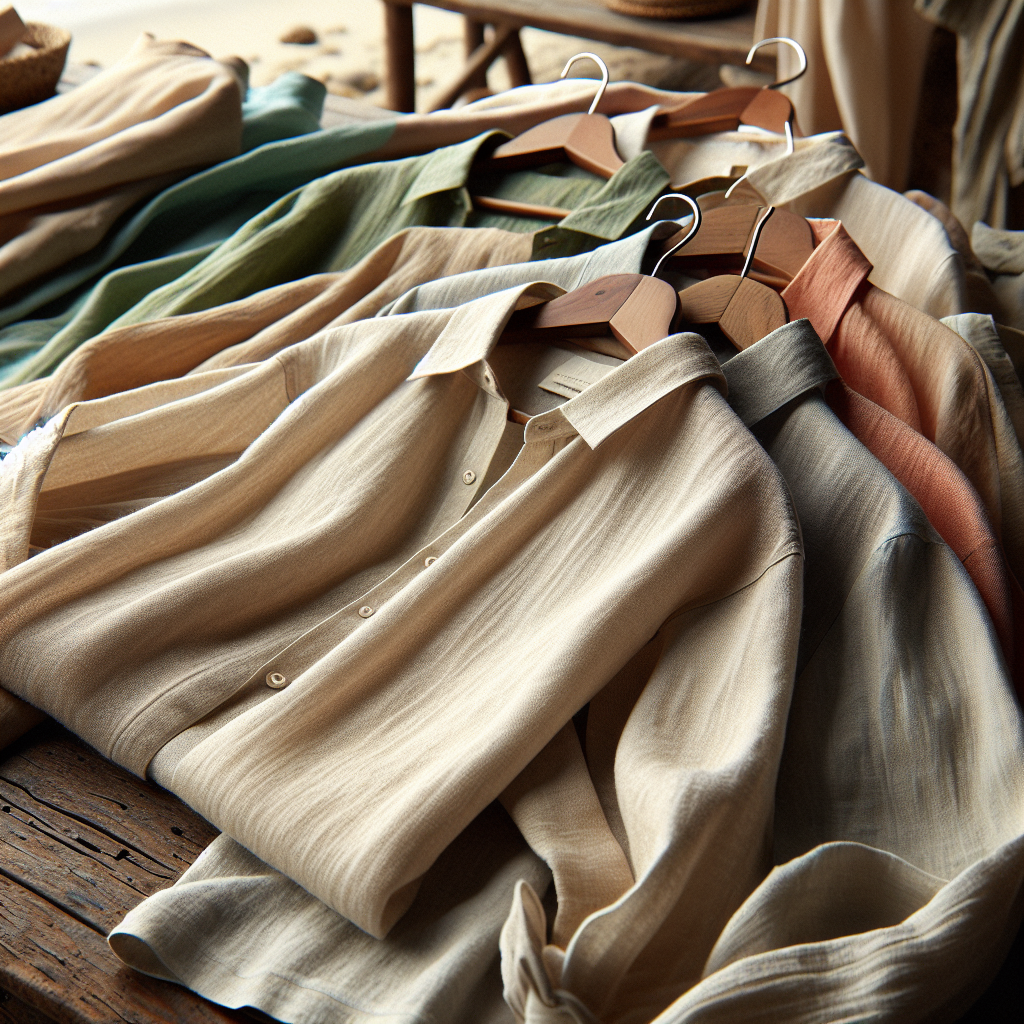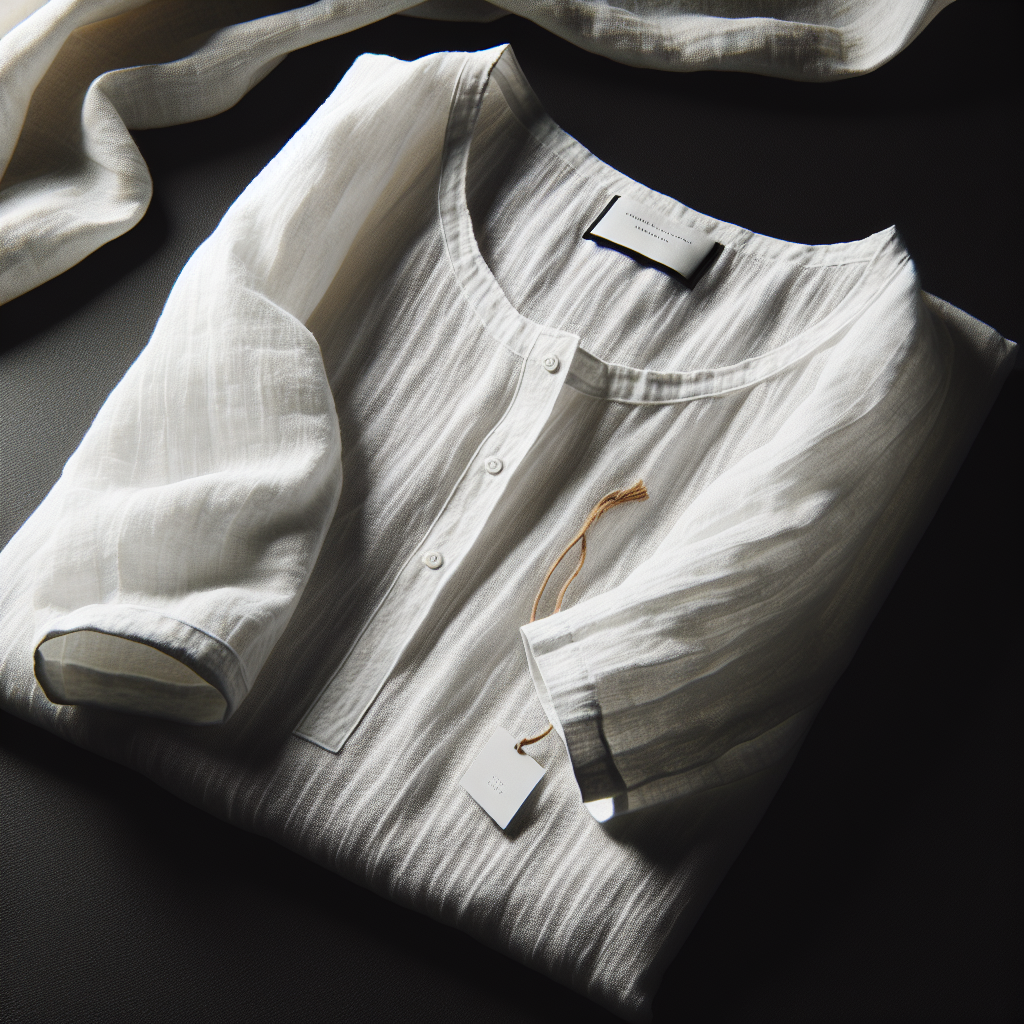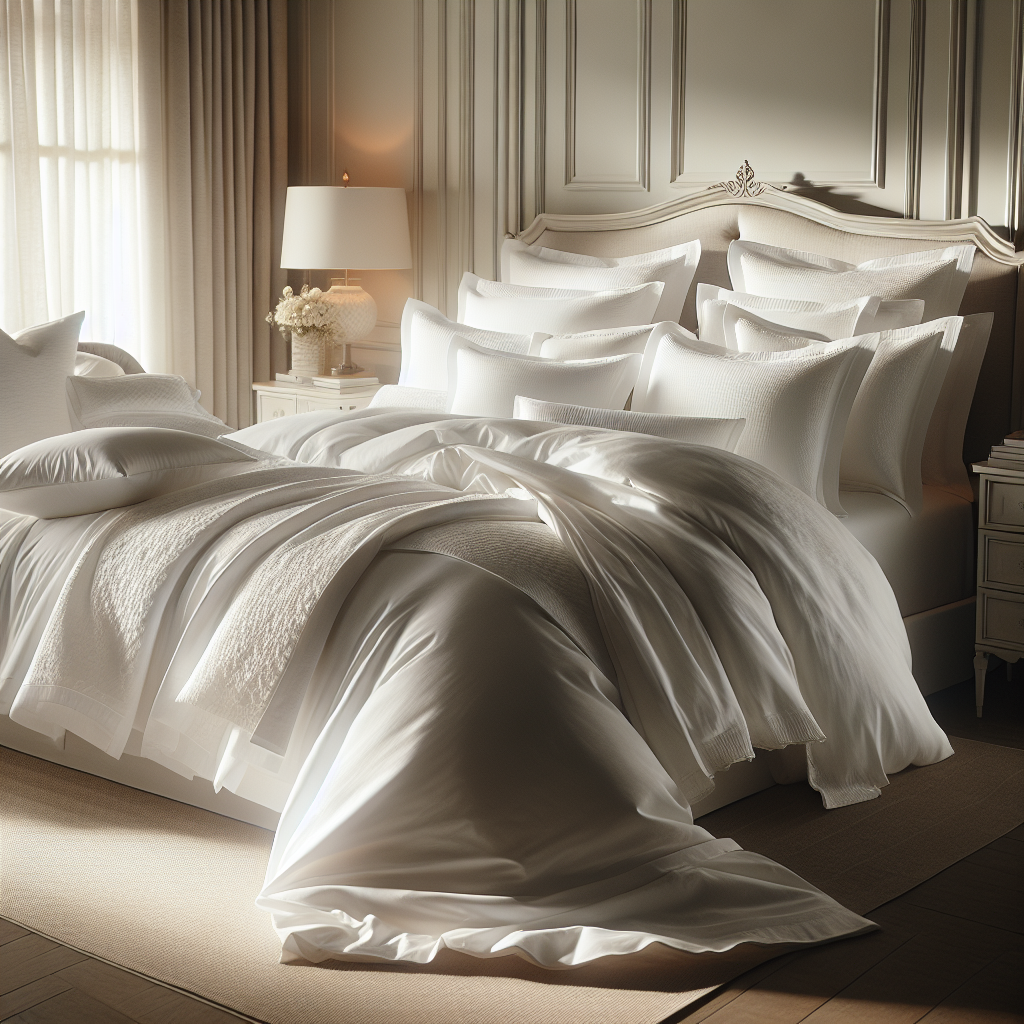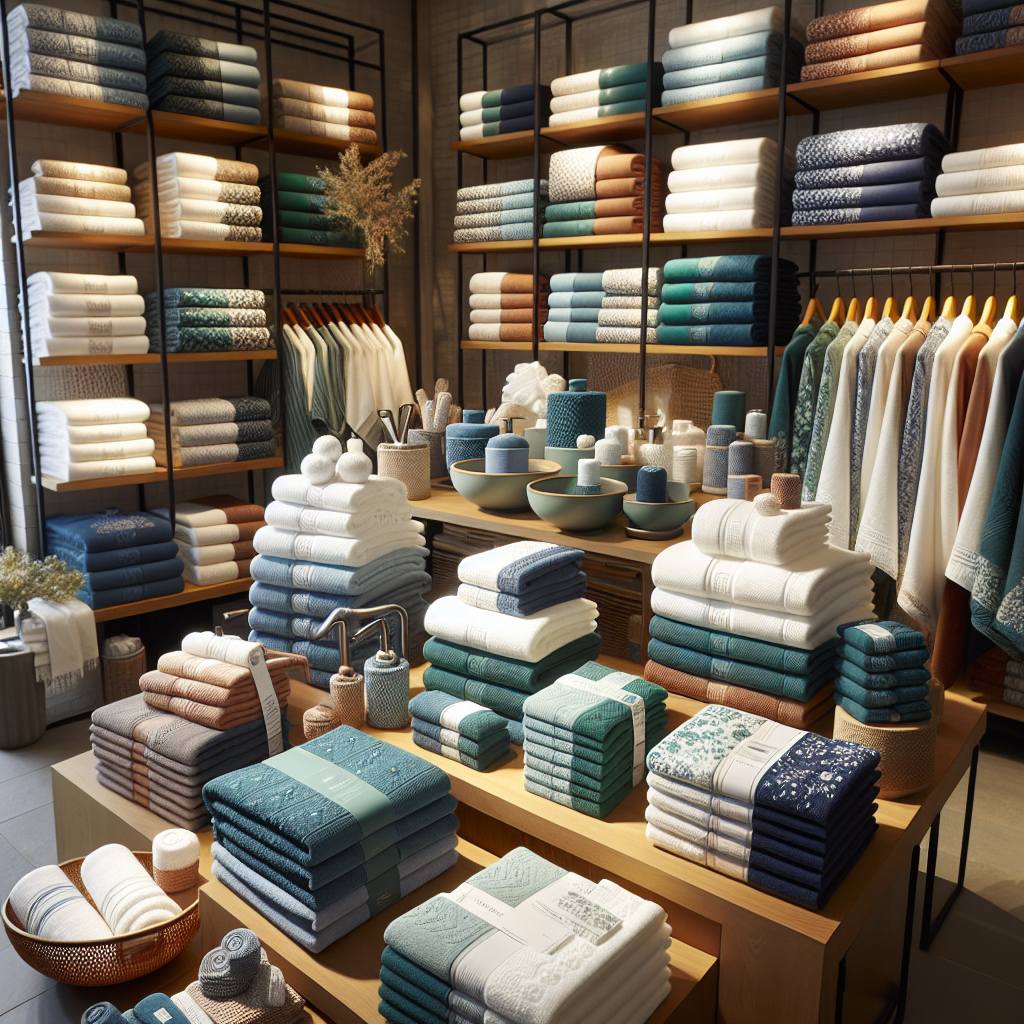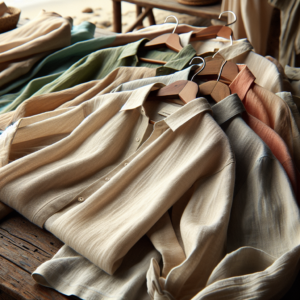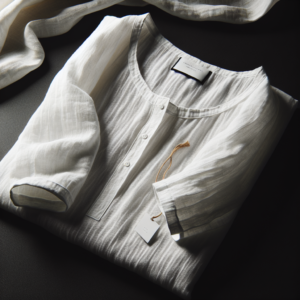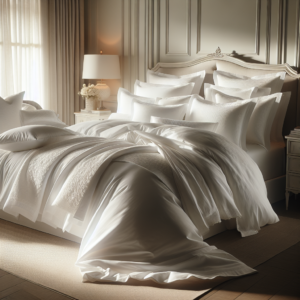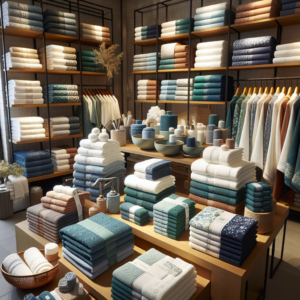The History of Linen: A Look at Chicago’s Rich Textile Heritage
Linen has been a staple textile for centuries, known for its durability, versatility, and luxurious feel. And when it comes to linen production, Chicago has a rich history that dates back to the 19th century. From its early beginnings as a small-scale industry to becoming a major player in the global linen market, Chicago has played a significant role in shaping the linen industry.
The history of linen in Chicago can be traced back to the mid-1800s when the city was rapidly growing as a major industrial center. With its strategic location near the Great Lakes and the Mississippi River, Chicago became a hub for transportation and trade, making it an ideal location for textile production. The city’s access to raw materials, such as flax and cotton, also played a crucial role in the development of the linen industry.
One of the earliest linen companies in Chicago was the Chicago Linen Company, founded in 1850. The company specialized in producing high-quality linen fabrics for clothing, bedding, and household items. With the growing demand for linen products, the company quickly expanded and became one of the largest linen manufacturers in the city.
In the late 19th century, Chicago’s linen industry experienced a significant boom, thanks to the invention of the power loom. This revolutionary machine allowed for faster and more efficient production of linen fabrics, making it more affordable and accessible to the masses. As a result, the demand for linen products skyrocketed, and Chicago’s linen companies flourished.
One of the most prominent figures in Chicago’s linen industry during this time was John Crerar. He founded the John Crerar & Company in 1880, which became one of the largest linen manufacturers in the world. The company’s success was attributed to its innovative production techniques and high-quality products, which were exported to various countries around the world.
The early 20th century saw a decline in the linen industry due to the rise of synthetic fabrics. However, Chicago’s linen companies adapted to the changing market and continued to thrive. In the 1920s, the city became a leading producer of linen damask, a type of fabric known for its intricate patterns and high-quality finish. The Chicago Damask Company, founded in 1923, was one of the major players in this market, producing some of the finest linen damask in the world.
The Great Depression in the 1930s had a significant impact on the linen industry in Chicago, with many companies struggling to survive. However, the city’s resilience and determination to bounce back from the economic downturn led to the revival of the linen industry in the 1940s. The demand for linen products increased during World War II, as linen was used for military uniforms and other essential items.
In the post-war era, Chicago’s linen industry continued to grow, with new companies emerging and existing ones expanding their operations. The city became a hub for linen production, with a wide range of products being manufactured, including tablecloths, napkins, towels, and bed linens. The quality of Chicago’s linen products was renowned worldwide, and the city became a major exporter of linen goods.
Today, Chicago’s linen industry continues to thrive, with several companies still producing high-quality linen products. The city’s rich textile heritage is evident in its numerous textile museums and exhibits, showcasing the evolution of the linen industry over the years. From its humble beginnings to becoming a global leader in linen production, Chicago’s history is a testament to the city’s resilience and innovation in the face of challenges.
In conclusion, the history of linen in Chicago is a fascinating tale of growth, adaptation, and success. From its early days as a small-scale industry to becoming a major player in the global market, Chicago’s linen industry has come a long way. And with its rich textile heritage, the city will continue to be a significant contributor to the linen industry for years to come.
Sustainable Linen: How Chicago Linen Companies are Leading the Way in Eco-Friendly Practices

Chicago is known for its bustling city life, deep-dish pizza, and iconic skyline. But what many people may not know is that the Windy City is also home to some of the most sustainable linen companies in the country. These companies are leading the way in eco-friendly practices, setting an example for the rest of the industry to follow.
One such company is Chicago Linen. Founded in 1983, this family-owned business has been providing high-quality linen services to hotels, restaurants, and healthcare facilities in the Chicago area for over 35 years. But what sets them apart is their commitment to sustainability. From their production processes to their packaging, Chicago Linen has implemented various eco-friendly practices to reduce their environmental impact.
One of the ways Chicago Linen is promoting sustainability is through their use of organic cotton. Unlike conventional cotton, which is grown using harmful pesticides and chemicals, organic cotton is grown without the use of these harmful substances. This not only benefits the environment but also the health of the farmers and workers involved in the production process. By using organic cotton, Chicago Linen is not only providing their customers with high-quality linens but also promoting a healthier and more sustainable way of producing them.
In addition to using organic cotton, Chicago Linen also has a water conservation program in place. The company has invested in state-of-the-art equipment that uses less water and energy during the washing and drying process. This not only reduces their water consumption but also their energy usage, resulting in a smaller carbon footprint. Furthermore, Chicago Linen has implemented a recycling program for their packaging materials, ensuring that they are not contributing to the growing problem of waste in landfills.
Another Chicago-based linen company that is making strides in sustainability is Linen Finder. This company specializes in providing linen services to the hospitality industry, including hotels, resorts, and vacation rentals. With a focus on sustainability, Linen Finder has implemented several eco-friendly practices in their operations.
One of their most notable initiatives is their use of linen rental programs. This allows their clients to rent linens instead of purchasing them, reducing the need for constant production and disposal of linens. This not only saves their clients money but also reduces the environmental impact of linen production. Linen Finder also offers a linen recycling program, where they collect used linens from their clients and recycle them into new products. This circular approach to linen production not only reduces waste but also conserves resources.
Apart from their production processes, Linen Finder also prioritizes sustainability in their transportation methods. The company has invested in a fleet of energy-efficient vehicles and uses route optimization software to reduce fuel consumption and emissions. They also offer their clients the option of using reusable linen bags instead of single-use plastic bags, further reducing their environmental impact.
Chicago may be known for its harsh winters, but that hasn’t stopped these linen companies from implementing sustainable practices year-round. Another company leading the way in eco-friendly practices is Chicago Textile Corporation. This company has been providing linen services to the hospitality industry since 1918 and has a long-standing commitment to sustainability.
Chicago Textile Corporation has implemented a closed-loop system for their production process, where all water used in the washing and dyeing of linens is recycled and reused. This not only reduces their water consumption but also eliminates the discharge of harmful chemicals into the environment. The company also uses energy-efficient equipment and has a solar panel system in place to generate renewable energy for their operations.
In conclusion, Chicago may be known for its deep-dish pizza, but it is also home to some of the most sustainable linen companies in the country. From using organic cotton to implementing water conservation and recycling programs, these companies are setting an example for the rest of the industry to follow. With their commitment to sustainability, these Chicago linen companies are not only providing high-quality linens but also making a positive impact on the environment.
Linen Trends in Chicago: What’s Hot and What’s Not in the Windy City’s Linen Industry
Chicago, also known as the Windy City, is a bustling metropolis known for its rich history, diverse culture, and iconic skyline. But beyond its famous landmarks and deep-dish pizza, Chicago is also home to a thriving linen industry. From luxurious hotels to trendy restaurants, linen plays a crucial role in the city’s hospitality and dining scene. As the demand for high-quality linens continues to rise, let’s take a closer look at the latest trends in Chicago’s linen industry.
One of the hottest trends in Chicago’s linen industry is the use of sustainable and eco-friendly materials. With the growing awareness of environmental issues, more and more businesses are opting for sustainable options in their linen choices. This includes using organic cotton, bamboo, and linen fabrics that are free from harmful chemicals and pesticides. Not only do these materials have a lower impact on the environment, but they also offer a luxurious and soft feel for guests.
Another trend that has been gaining popularity in Chicago is the use of bold and vibrant colors in linens. While traditional white linens have always been a staple in the hospitality industry, many businesses are now opting for colorful linens to add a touch of personality and uniqueness to their establishments. From bright blues and greens to rich purples and reds, these bold colors can make a statement and create a memorable experience for guests.
In addition to colors, patterns are also making a comeback in Chicago’s linen industry. From classic stripes and polka dots to more intricate designs, patterned linens can add a touch of elegance and sophistication to any setting. Many businesses are incorporating these patterns into their tablecloths, napkins, and even bedding to create a cohesive and visually appealing look.
One trend that has been consistently popular in Chicago’s linen industry is the use of high-quality, luxurious fabrics. With the city’s reputation for luxury and high-end experiences, it’s no surprise that businesses are investing in top-of-the-line linens to elevate their guest’s experience. This includes using fabrics like Egyptian cotton, silk, and satin, which offer a soft and luxurious feel that guests will remember long after their stay.
On the other hand, one trend that seems to be fading in Chicago’s linen industry is the use of traditional, heavy linens. While these linens were once a staple in many establishments, they are now being replaced with lighter and more breathable fabrics. This is especially true in the summer months when the city’s heat and humidity can be overwhelming. Businesses are opting for lightweight linens that are not only more comfortable for guests but also easier to maintain and launder.
Finally, with the rise of social media and the importance of aesthetics in today’s society, businesses in Chicago’s linen industry are paying more attention to the overall design and presentation of their linens. This includes incorporating unique folds, creative placements, and even personalized touches like monograms or logos. These small details can make a big impact and create a memorable experience for guests.
In conclusion, the linen industry in Chicago is constantly evolving, with new trends emerging and old ones fading away. From sustainable materials and bold colors to luxurious fabrics and creative designs, businesses in the Windy City are always looking for ways to elevate their guest’s experience through their linen choices. As the demand for high-quality linens continues to grow, we can expect to see even more exciting trends in the future.

